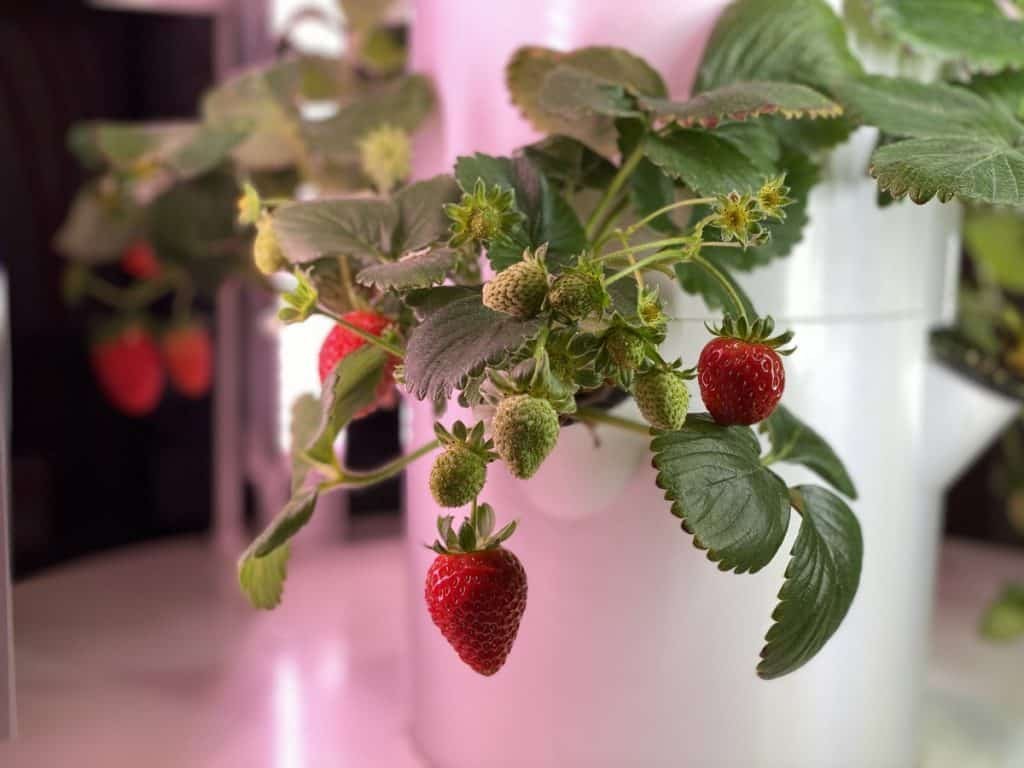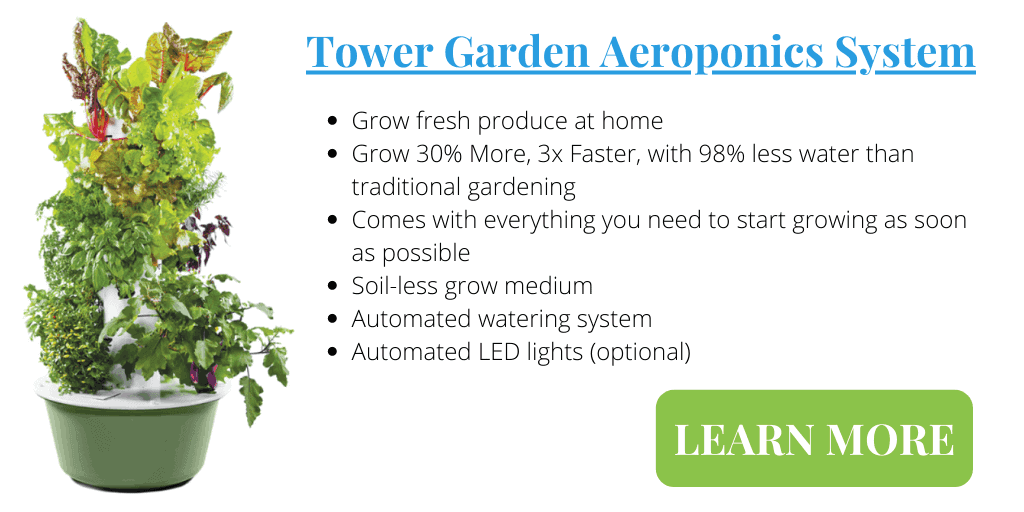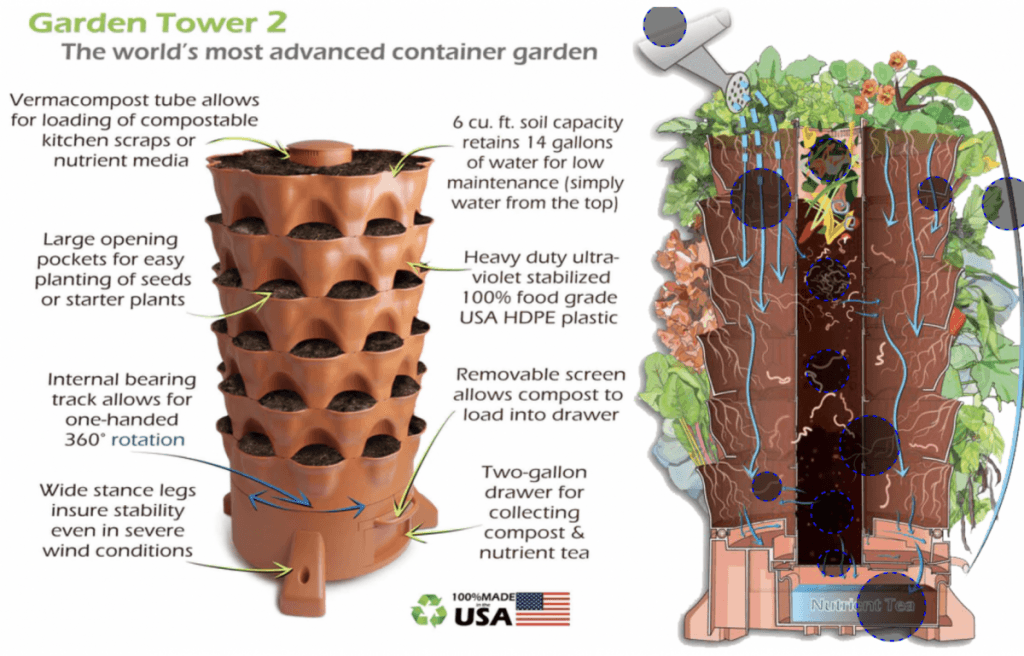Vertical gardens are an excellent option for those wanting to free up floor space, easily access their plants, and create lush green walls. As with any gardening system, you may find yourself wondering how often you should water your vertical garden?
Vertical gardens require regular daily watering like any other type of garden. This can be done using an automated drip system on a timer or by hand. The best time to water is 1-2 hours before sunrise to limit evaporation and maximize water absorption. Use sandy soils for plants that prefer drier climates and more peat based soils for those that require lots of moisture.
Watering plants may seem simple enough a task, but believe it or not, there’s a right and wrong way to do it. Let’s have a look at how frequently you should water your vertical garden, as well as tips on how to water and maintain your vertical jungle.

Watering Your Vertical Garden
There are plenty of options available when choosing where you can place your vertical garden. Some people grow their vertical garden directly in the ground, while others place it on their balconies or exterior walls.
Believe it or not, there’s a right and wrong way to water your plants wherever you’re growing your garden. Here are our tips for watering your vertical garden the right way
Here’s my latest article about vertical gardens with 7 creative examples
Water Your Plants At The Base
Fungus and mildew are the last things you want to struggle with when you’re gardening. It’s best practice to water your plants at their base rather than over the top.
Watering your plants this way will prevent fungus and mildew from growing and reduce the number of weeds growing in your garden. Many people choose to use hydroponics for growing their vertical gardens because they require less space and are more efficient with water and space usage.
Find out about all the different hydroponic techniques that can be used for growing at home.
Allow Proper Water Drainage
Taking care that your planters have adequate drainage holes will prevent future plant loss. Drainage holes are vital to ensure that you don’t overwater your plants and cause root rot in the process.
Reduce Energy Spent On Watering Through Irrigation Systems
Adding a programmable irrigation system to your garden will be a time and energy-efficient way to water your plants. There are quite a few options for installing irrigation systems, and one of the most popular and efficient is an automated drip or weeping system.
Drip irrigation systems are easy to DIY install and expand with the size of your garden. The high effiency watering system reduces overspray, fungus growth and evaporation while providing water directly to the base of your plants
Once you have the system installed, the digital timer will turn on your hose to keep your garden hydrated whether you’re sleeping or on vacation.
- SAVE TIME AND EFFORT: This plant watering kit has everything you need to get started with drip...
- INSTALL IN 3 EASY STEPS: 1) Connect timer and tubing to water source; 2) Lay out tubing; 3) Use...
- IDEAL FOR ANY LEVEL GARDENER: Easy to customize, install, and operate; Kits contain all the...
Add Mulch or Cover Crops to Conserve Water
Adding mulch or low laying ground cover to your vertical garden has many benefits — one of these is water retention. Much and other ground cover acts as an insulation layer and prevents excessive moisture evaporation.
If you find yourself watering your plants frequently, it may be an excellent option to consider. You can add mulch overtop of the soil in your vertical garden containers or plant ground cover to grow around your main crops. Learn more about the soil you should use in your vertical garden in my article, Best Soil For Vertical Gardens.
Bottom Water Your Plants To Reduce How Frequently You Water Them
Over watering and under watering plants is one of the biggest problems gardeners face. Bottom watering is a technique where the water is delivered directly to the roots rather than to the top and allowed to weep down.
Providing water from the bottom forces the roots to grow down deep giving the plant more stability and better access to water. There are different bottom watering techniques including using wicking cloth, nutrient film technique, and aeroponic tower gardens.
I use the Tower Garden vertical aeroponic system at home to grow herbs, greens, tomatoes, cucumbers and strawberries indoors and outdoors depending on the season. The system is really easy to setup and operate because it has an automatic timer that works the water pump and the lights when I grow indoors.
If you’re interested in more information my article on what is a Tower Garden will help.

When Should I Water My Vertical Garden?
It’s best practice to water your vertical garden in the early morning or the evening. This way, the soil will retain water for more extended periods.
If you water your garden during the hottest time of the day, the moisture may evaporate too quickly — leading to more frequent waterings.
Is A Vertical Garden Difficult To Maintain?
You’ll find that vertical gardens are easier to maintain than regular ones. Here are a few benefits of having a vertical garden vs. a regular garden:
- Working at eye level is more accessible than having to bend over.
- You can occupy wall space rather than floor space.
- Plants are in containers, which means they aren’t prone to pests and disease.
- Watering a vertical garden requires less water than a normal one.
Generally, you’ll find that the “space-saving” aspect is enough to convert hundreds of people who are limited to only a balcony space.
How Can I Take Care Of A Vertical Garden?
Taking care of a vertical garden is sometimes easier than taking care of a normal one. Here are some ways you can ensure you grow a thriving vertical garden:
Choose Plants According To The Light Your Space Receives
Lighting is one of the main things to consider before deciding which plants to plant in your vertical garden. If you choose a north-facing area, you’ll need different plants than if you have a south-facing wall.
If you have sun-loving plants it’s best to grow them in a north-south direction and shade-loving ones in an east-west direction. Herb gardens are a good idea if your garden gets little sun, and succulent gardens are great if you get loads of sunlight. Learn more in my article, What Direction Should a Vertical Garden Face?
Ensure Your Garden Is Securely Attached
Once you’ve determined the perfect position for your plants, you’ll need to attach the structure or frame to the wall securely. Once your frame is attached to your vertical surface, you can plant and water your seedlings and enjoy your new garden.
If you’re building an A-Frame vertical garden be sure to use oversized lumber and lots of fasteners to ensure the skeleton structure can support the load.
Use Recyclables As Containers
A great way to DIY a vertical garden is by reusing old containers as grow pots. Here are some ways you can use recyclable materials as containers:
- Use 2-liter plastic bottles cut in half as pots.
- Cut open one side of a milk carton and use it as a seedling starter tray.
- Cut a large enough rectangle on the side of a plastic bottle and poke small holes on the other end to create drainage — use this as a seedling tray or plant small plants.
Using a soil based vertical garden that incorporates a composting system inside makes growing herbs, greens and strawberries at home an easy job. The Garden Tower 2 is a combined vertical garden, worm farm and composting unit creates natural fertilizer for itself and the rest of your gardens.

Which Plants Are Best For Vertical Gardens?
Unsure which plants are best for the lighting your vertical garden receives? This section is for you!
Ferns
Ferns are a great option if you want an adaptive plant that adores humidity and shaded areas.
These plants grow quickly and cover up large areas in a vertical garden. They also generally grow downwards (due to the nature they reproduce), making them optimal for vertical gardens.
Some ferns you should consider planting includes:
- Sword ferns
- Bird’s nest ferns
- Blue star ferns
- Maidenhair ferns
To bring out their deep and light green hues, pair them with flowering trailing plants to create a live artistic masterpiece on your wall.
Bromeliads
Bromeliads are known for their shallow roots, which means that they need little space to thrive — making them one of the easiest plants to grow in your vertical garden.
Much like ferns, little direct sunlight is needed to create a thriving environment for these plants. There are also a few varieties like the Aechmea species that thrive in cooler temperatures.
Succulents
If you want a low-maintenance garden, choosing to plant succulents is your best bet! They look amazing and don’t need frequent watering to maintain their beautiful colors.
They are also known to thrive in very sunny conditions. Some great options to look out for are crassula, echeveria, and sedum.
Vines
These low-maintenance, indirect light-loving plants will quickly spread over and cover your walls. Some vining plants have beautiful blossoms. Here are some vines you can look out for:
- Hydrangeas
- Wisteria
- Clematis
- Climbing roses
You can also opt for ivy varieties if you want to add some green to your vertical garden.
Vegetables
If you want to become self-sustaining or simply want to reduce food costs, planting veggies in your vertical garden is a great option! Vegetables that do great in vertical gardens include:
- Beans
- Carrots
- Cucumbers (miniature)
- Eggplant (miniature)
- Garlic
- Onions (miniature)
- Peppers (compact varieties)
- Tomatoes (cascading / patio)
They also vary in light requirements, so pick those most suited to your space and preferences.
Conclusion
If you’re limited on floor-space for a garden, vertical gardens are the perfect alternative. Watering your vertical garden shouldn’t be a difficult task, and you’ll generally find that you can water your vertical garden every 2-3 weeks.
Adding irrigation systems and mulching is also a good option to conserve water and save time and energy. Enjoy the benefits of having a vertical garden without the hassle of maintaining one!

